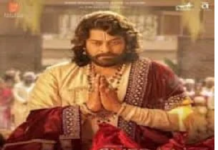
The Winter Solstice is a celestial milestone, marking the first official day of winter in the Northern Hemisphere. It symbolizes the shortest day, the longest night, and a turning point in the Earth’s seasonal cycle. This year, the Winter Solstice occurs on Saturday, December 21, at 4:21 a.m. EST. Here’s everything you need to know about this amazing event and its cultural, astronomical, and seasonal significance.
When Is the Winter Solstice in 2024?
- The Winter Solstice will occur on Saturday, December 21, at 4:21 a.m. EST.
- While the solstice can occasionally fall on December 20, 22, or 23, December 21 is the most common date.
On this day, the Northern Hemisphere experiences its shortest daylight hours and longest night of the year, as the Earth’s axial tilt positions it farthest from the Sun.
What Is the Winter Solstice?
The Winter Solstice marks the precise moment when the Northern Hemisphere is tilted approximately 23.5 degrees away from the Sun. This alignment causes the Sun’s rays to strike the region at their most indirect angle, resulting in shorter daylight hours and colder temperatures.
According to the Old Farmer’s Almanac, the solstice lasts for only a fleeting moment, signifying the exact time when this tilt reaches its furthest point.
Astronomical vs. Meteorological Winter
- Astronomical winter: Begins on the Winter Solstice and is determined by the Earth’s position about the Sun.
- Meteorological winter: Defined by meteorologists to begin on December 1, aligning with the coldest three months of the year.
After the solstice, daylight hours gradually begin to increase, closing in the Summer Solstice, the longest day of the year.
Cultural and Historical Significance
The Winter Solstice has attracted civilizations for millennia, symbolizing renewal, hope, and the gradual return of light.
Ancient Traditions
- In ancient cultures, the solstice was celebrated as a time of rebirth and transition.
- Monuments like Stonehenge in England and New Grange in Ireland align with the solstice sun, reflecting its importance in ancient rituals.
Festivals and Celebrations
- Many modern and ancient festivals have their roots in the Winter Solstice, including:
- Yule: Celebrated in Northern Europe, honoring the return of the Sun.
- Hanukkah: Known as the Festival of Lights, it often coincides with the solstice period.
- Today, seasonal events, holidays, and family gatherings continue to honor the solstice’s themes of togetherness and hope.
Why It Matters: Agricultural Importance
For centuries, the Winter Solstice has served as a guide for agricultural practices. Farmers relied on their understanding of seasonal changes to determine planting and harvesting schedules, making the solstice a crucial event in agricultural societies.
A Contrast in the Southern Hemisphere
While the Northern Hemisphere experiences the Winter Solstice, the Southern Hemisphere celebrates its Summer Solstice on the same day, marking the longest day and the official beginning of summer.
How to Make the Most of the Winter Solstice
- Connect with Nature: Take time to enjoy the serenity of the season by observing the longest night under the stars.
- Reflect and Renew: Use this day as a moment for introspection and planning, aligning your personal goals with the natural cycle of renewal.
- Celebrate Light: Many cultures use this day to light candles or fires, symbolizing hope and the return of brighter days.
Conclusion
The Winter Solstice is much more than an astronomical event; it’s a moment that bridges science, culture, and the rhythm of life on Earth. As the shortest day and longest night of the year, it reminds us of the cyclical nature of time and the promise of brighter days ahead. Whether you observe it for its scientific wonder, historical significance, or as a marker of seasonal change, the Winter Solstice is a moment worth celebrating.
Image credit: thereisadayforthat.com







































